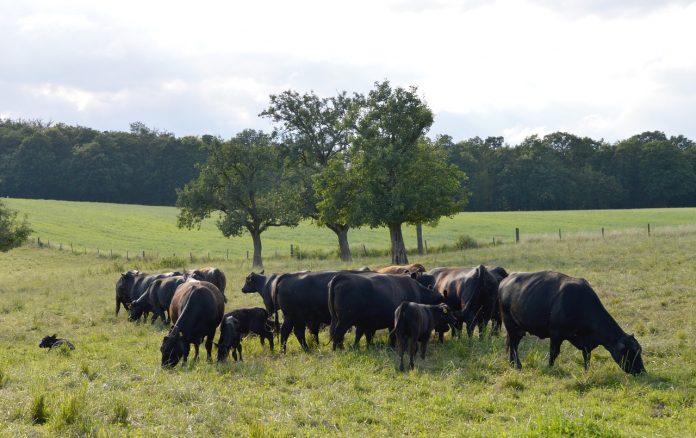I am going to start off going in the wrong direction with this column. My English teachers in high school taught us, fledgling essayists, to begin a paper with a topic sentence to let the reader know what the subject is, and then use that sentence as the foundation to explain, discuss, confirm and illuminate the details.
With this column, I am going to lead with what I am not writing about. Even though the title of the column is Grass-finished beef, I am going to ignore the following topics: How do you market grass-finished beef? Does grass-finished taste as good as grain-finished? What is better for the environment and combatting climate change? Grass or grain? What breeds finish best on grass? How do you achieve a select or choice carcass consistently?
These are all good questions, and you can google “grass-finished or grass-fed beef” and find the answers. Instead, I am going to skip a few off-ramps and go directly to briefly discuss how to finish on grass. And that is my true topic or destination sentence — I always get there, but sometimes I take the scenic route.
Background
Here is the context. I am working with a farm that is considering shifting from dairy to a cow-crop operation. They will continue to grow corn, soybeans, hay, wheat and other grains and sell them to the local grain elevator or co-op and plan on starting a beef herd to graze 65 acres, give or take, of back pasture.
They are starting with easy steps by finishing the cattle on grain. They have operational experience and knowledge based on decades of maintaining a high-performing dairy herd.
One of the partners is interested in starting a small grass-finished herd, 20% of the total beef herd, believing that customers will be willing to pay a premium for a grass-finished product.
Here is the direction I gave the partners. If you want to finish in two growing seasons on grass, your cows need to produce enough milk to wean a calf weighing about 600 pounds in 205 days. To reach a finishing weight of around 1,200 pounds by 19 months, you are looking at an average daily gain of 1.25 pounds. The weight gain needs to be consistent, or it can negatively impact meat quality.
Quality forage
The key to achieving this goal is quality forage. Producers must shift from thinking that beef feed is good enough for beef cows to understanding they need dairy quality feed.
The two critical components of a high-quality pasture are energy and protein. Typically, a pasture with cool-season grasses and enough legumes will provide sufficient protein.
During the summer slump, you might want to add summer annuals to the mix such as green leaf corn and soybeans to beef up available protein, perhaps incorporating warm-season grasses as well.
The second component, energy, is the most limiting nutrient on the pasture. High energy forage typically has fewer cell walls or neutral detergent fiber and more sugars and other highly digestible, non-fiber carbohydrates. Grains have loads of energy, forage less so.
Options
To provide high energy intake for your cows, a producer has two options. First, manage pastures for less NDF. The percentage of NDF increases with plant maturity and thereby becomes less digestible. This reduces total digestible nutrients and reduces dry matter intake. So, graze before flowering.
Second, make sure you have a strong legume presence in your pasture mix. Legumes typically are high digestibility compared to grasses and thus lower NDF. In a Michigan State University grass finishing system, the cows grazed on pastures with NDF values less than 45% and were able to achieve two pounds average daily gain.
Finally, you need to finish strong. As cattle near adult size, energy intake is applied to marbling and fat instead of muscle and bone. With spring calving, the final phase of pasture finishing syncs up as the perennial pasture growth is slowing down during late fall.
Pasture quality may be good as the cool weather elevates sugar content, but quantity is dropping. Consider adding annual species that tolerate cold weather and can provide energy to finish.
One possibility is brassicas. They have low NDF, and their high NFC is comparable to corn silage. But, it’s important to avoid brassicas only feed.
Brassicas have a high moisture content, which limits intake because the gut becomes full of water. Also, they contain inadequate fiber to support rumination and prevent ruminal acidosis. Mixing brassicas with forage oats or dry hay can provide the necessary fiber intake.
This road map demonstrates how you can finish on grass. If you want to take this journey, you will need practice, knowledge and persistence, because now and then you will take a wrong turn. Good luck and bon voyage!













